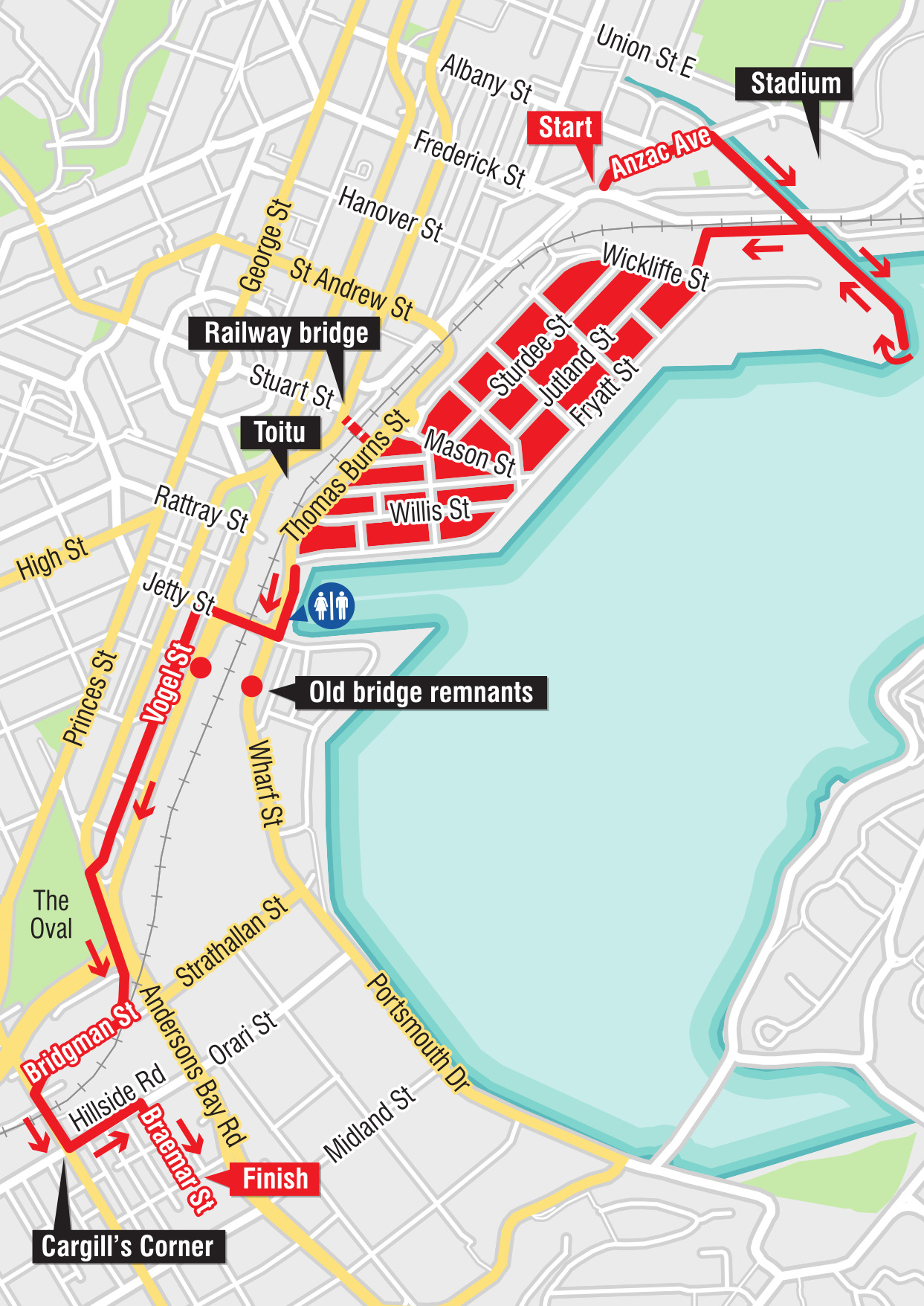
Walking slowly through our own city can open up the eyes to a whole new world. Visible history shows in structures, old signs and sights that remain from yesteryear. Some of it is plain beautiful to gaze at, especially if you look up.

Anzac Ave’s a good place to start, a gift to us from the 1925-1926 New Zealand and South Seas International Exhibition, held at today’s Logan Park. Some of us lucky enough to recall our elders’ reminiscences might remember the thrill that daily visits to this exhibition provided for young people of the time.
Cruising the avenue of trees is a James Bond moment but the era has also left us some chic buildings that are best absorbed at pedestrian pace.
Although Anzac Ave pings in autumn, winter sunlight brings it to life. The lack of leaves allows low sun to spotlight its architectural show-stoppers. The 1950s Hocken building takes centre stage.
Now’s also a good time to marvel as a high rise is constructed just across the road. There’s great skill involved in creating such a structure and most of us wouldn’t know where to start.
Anzac Ave hosts The Water of Leith flowing underneath on route to the harbour, having started life at Leith Saddle, near the northern motorway. Follow it down Minerva St, parallel to the stadium. A state highway and a train track pass only a few metres above your head which either doesn’t bear thinking about or makes for a modern meditation on humankind’s achievements.
The Leith soon spills its guts through its mouth at the harbour. A grass track takes you alongside to enjoy the action.

During the weekend it’s atmospherically desolate. Wide, flat streets make it a good spot for learner drivers. During the week it’s full of local businesses with workers working audibly hard.
After seeing two world wars, a depression and now, their second global pandemic, these buildings remind us that economies bounce back and life goes on.
The railway overbridge leads to the pointy Toitu building and the remarkably intact collection of historic buildings around Queens Gardens.

Accessible design has come a long way since the bridge was opened in 1977. Children of the 1970s might remember the celluloid glamour of the opening’s attendance by Stu, the long-haired, incongruously bearded schoolboy star.
Up high, it’s a pleasure to clock the 360 degree views we normally whizz by. Bluestone remnants of the ends of the previous overbridge are visible towards the south. Vogel St buildings sit invitingly like a long row of interlocking liquorice all-sorts.

As well as their looks, these buildings have bequeathed us large indoor spaces and there are some prime op shops in the area. Head south and rubber-neck away.
Across the Oval there’s more. Bridgman St used to be part of State Highway 1’s main route out of town but was superseded in the 1970s by a new section of motorway edging the Oval. For vehicles, Bridgman St is now a back route but some snazzy signwriting from the era remains.
All that time, Bridgman Street’s Victor has been smiling at us from the top of his pole at the panel beaters. Actually, it’s Victor Mk II now — the 1961 original rusted out and was replaced in about 1989 by a new version with a fibreglass chassis.
A new building then blocked off the public’s view so in 2002 Vicky came along, installed on her own pole by a crane with a long boom. We can glimpse her as we drive by but being on foot allows full homage to these Dunedin institutions.
Why Volkswagons? Because they were the only car with a fully steel chassis, making them easy to mount.

Full disclosure: Richard was my father. Further disclosure: the car yard was used as part of an undercover drug operation. The operation peaked on March 1, 1975, coincidentally while one of my brothers was being born, leaving my mother unable to explain to hospital staff her husband’s apparently casual absence.
Never trust a used car salesman? Chances are, they’re on the right side of the law.
Around the corner in Braemar St is yet more interesting industrial heritage in the Dunedin Gasworks Museum, open on Sunday afternoons.
We are lucky early Dunedin had such wealth to bequeath us today’s historic buildings.
As it turns out, we’re also lucky Dunedin hit hard times. If we’d continued as New Zealand’s largest and most prosperous city, many of today’s visual taonga would have either been bowled over or been hidden away behind high rises.












